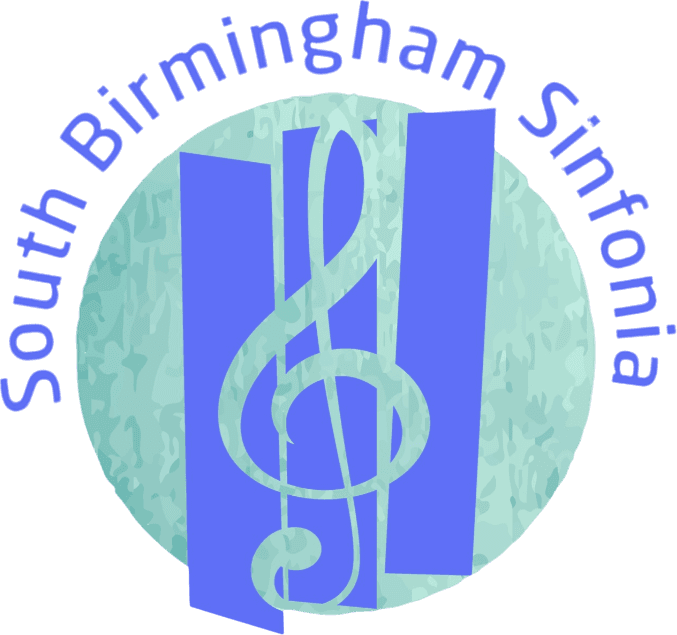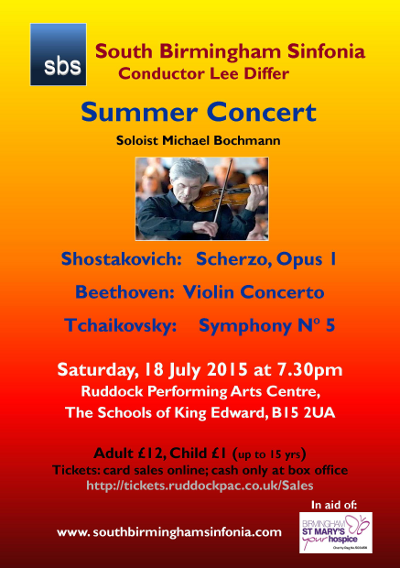7.30pm on 18th July 2015, in the Ruddock Performing Arts Centre.
Our Summer 2015 concert featured the well-known violin soloist and SBS’s patron, Michael Bochmann in Beethoven’s Violin Concerto. The concert also featured the ever-popular fifth symphony by Tchaikovsky, and was started with a youthful piece by Shostakovich written when the composer was just 13.
Conductor: Lee Differ
Shostakovich’ Scherzo for Orchestra in F sharp minor
Shostakovich’s Scherzo for Orchestra was written when he was only 13. It is light, tuneful and is (as the name suggests) playful piece and is sure to be a popular opener to this concert.
Beethoven’s Violin Concerto
Michael Bochmann joins the South Birmingham Sinfonia to give a performance of the Beethoven violin concerto.
Beethoven’s Violin Concerto was written in 1806. Its first performance by Franz Clement was unsuccessful and for some decades the work languished in obscurity, until revived in 1844 by Joseph Joachim. Since then it has become one of the most well-known violin concerti.
The work is in three movements:
- Allegro ma non troppo
- Larghetto
- Rondo (Allegro)
Tchaikovsky’s Fifth Symphony
Tchaikovsky’s fifth symphony is an ever-popular work, and frequently heard. It is in four movements:
- Andante – Allegro con anima.
- Andante cantabile con alcuna licenza, featuring a french horn solo.
- Allegro moderato, a waltz.
- Finale, ending in a triumphant E major.
Tchaikovsky’s fifth is a cyclical symphony with a recurring motif representing “fate” that is present in all four movements.
After a slow introduction, introducing us straight away to the “fate” motif, the first movement is a clever combination of march rhythms in 6/8 that give way to delicate waltz time in the second subject. The movement ends in a slightly unexpected way with the marching going off into the distace.
The second movement is a lyrical piece featuring a well-known melody on French horn. However fate is never far away, and the fate theme appears twice, the second time even more sudden and insistent, before the movement can return to relative tranquillity.
The third movement is, appropriately, a waltz. “Fate” returns at the end, transformed and apparently more subdued, and this prepares for the opening of the final movement which will develop these music ideas to greater depth. The main part of the finale is in a brisk martial tempo, leading ultimately to a final affirming coda marked “Presto”.

